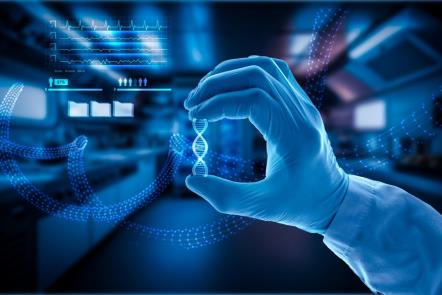What is recombinant dna technology: Recombinant DNA technology, often referred to as genetic engineering, has revolutionized our understanding of life and holds immense potential for shaping the future of medicine, agriculture, and even industrial processes. This powerful technique allows scientists to manipulate DNA, the blueprint of life, by cutting, combining, and introducing genetic material from different organisms. By doing so, we can create novel combinations of genes that wouldn’t exist naturally, leading to groundbreaking advancements across various fields.
Demystifying the Building Blocks: Understanding DNA
Deoxyribonucleic acid (DNA) is the molecule that carries the genetic instructions for building and maintaining an organism. It’s a long, double-stranded molecule shaped like a twisted ladder. The rungs of this ladder are made up of pairs of chemical units called nucleotides, each containing a sugar, a phosphate group, and a nitrogenous base. The specific sequence of these bases—adenine (A), guanine (G), cytosine (C), and thymine (T)—determines the genetic code. This code instructs the cell on how to produce proteins, the workhorses of the cell that carry out various functions essential for life.
The Tools of the Trade: Enzymes and Vectors
Recombinant DNA technology relies on a specialized toolkit consisting of enzymes and vectors. Restriction enzymes, aptly named for their ability to restrict or cut DNA at specific sequences, are crucial players. These molecular scissors can recognize and cleave DNA at predetermined locations. Imagine a pair of specialized scissors that can only cut paper at a specific dotted line. Similarly, restriction enzymes cut DNA at specific sequences, generating fragments with “stickyends—single-stranded overhangs that can readily bind to complementary sequences. what is recombinant dna technology
Vectors, on the other hand, act as delivery vehicles. They are typically small, circular DNA molecules found in bacteria (plasmids) or viruses. Scientists can modify these vectors by removing unwanted genes and inserting the desired DNA fragment using an enzyme called DNA ligase, which acts like molecular glue, sealing the cut ends and forming a recombinant DNA molecule.
The Recombination Process: Unveiling the Steps
The process of recombinant DNA technology can be broken down into several key steps:
- Isolation of the desired gene: This involves identifying and extracting the specific gene of interest from the source organism’s DNA. Techniques like gel electrophoresis are used to separate DNA fragments based on size, allowing scientists to isolate the desired gene.
- Preparation of the vector: A suitable vector is chosen and modified to remove unnecessary genes and create space for the foreign DNA insertion. Restriction enzymes are used to cut the vector at specific sites.
- Gene insertion: The isolated gene fragment and the prepared vector are treated with the same restriction enzyme, creating compatible sticky ends. These complementary ends allow the gene and vector to ligate, forming a recombinant DNA molecule.
- Transformation: The recombinant DNA molecule is then introduced into a host organism, often bacteria, using various techniques like heat shock or electroporation. This allows the recombinant DNA to replicate within the host cell.
- Selection and screening: Once transformed, the host cells are carefully selected to identify those containing the desired recombinant DNA. Various techniques based on antibiotic resistance or specific gene markers are employed for this purpose.
- Expression and analysis: If successful, the host cells will express the foreign gene, producing the desired protein product. This protein can then be purified and analyzed for its function.
The Power of Recombinant DNA: Applications Across Fields
Recombinant DNA technology has revolutionized various disciplines.
- Medicine: This technology has enabled the production of life-saving drugs like insulin, human growth hormone, and therapeutic antibodies for treating cancer and autoimmune diseases. Scientists can now introduce genes that code for functional proteins into patients suffering from genetic disorders.
- Agriculture: Recombinant DNA technology has led to the development of genetically modified organisms (GMOs) with improved pest resistance, increased yield, and enhanced nutritional value. It allows scientists to introduce genes from other organisms that confer these beneficial traits.
- Industrial Biotechnology: Enzymes produced using recombinant DNA technology are used in various industrial processes, such as biofuel production, food processing, and bioremediation. These enzymes offer eco-friendly alternatives to traditional methods.
- Research: Recombinant DNA technology is a powerful research tool for studying gene function, investigating diseases, and developing new diagnostic tools. Scientists can create models of human diseases in cells or animals by introducing specific genes to understand disease mechanisms and test potential therapeutic interventions.
Ethical Considerations and the Future of Recombinant DNA
Despite its immense potential, recombinant DNA technology raises ethical concerns. The potential unintended consequences of introducing foreign genes into organisms and the environmental impact of GMOs are topics of ongoing debate. Additionally, ensuring equitable access to the benefits of this technology and preventing its misuse for biowarfare are crucial considerations.
Looking ahead, recombinant DNA technology is poised to play an even greater role in shaping the future. what is recombinant dna technology
